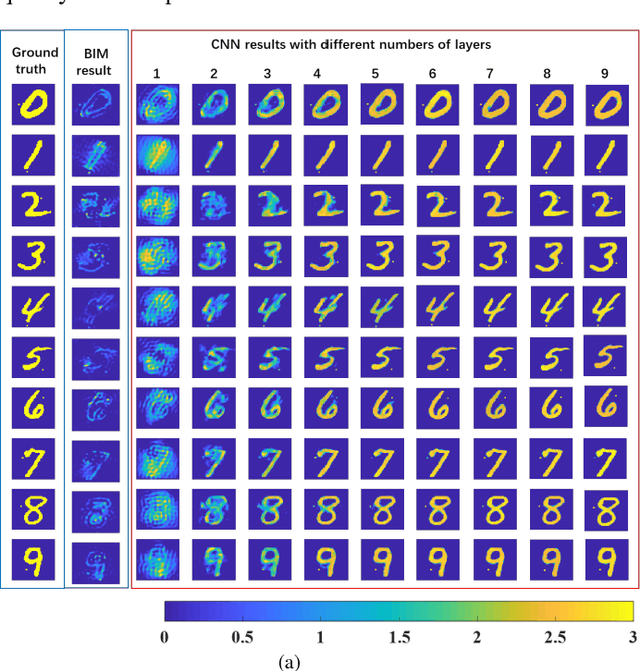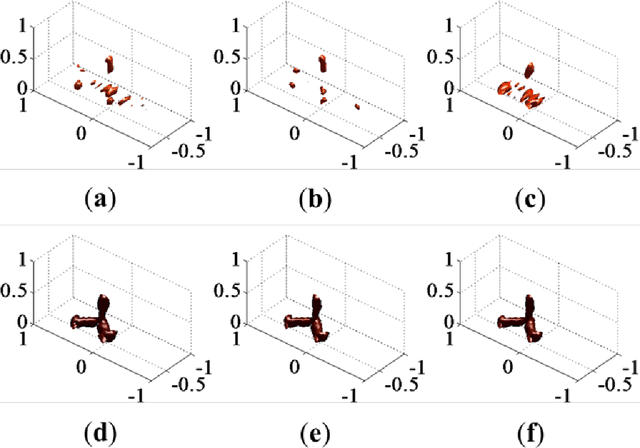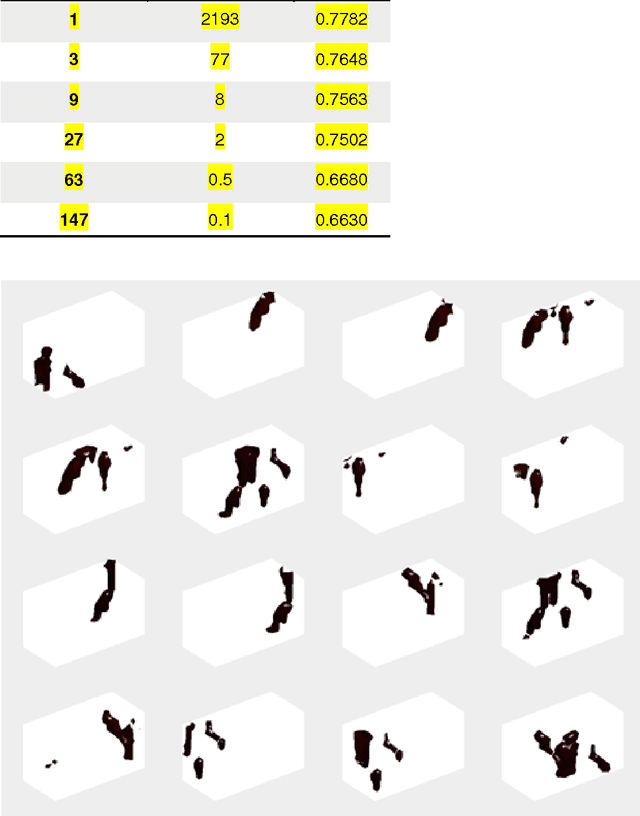Long Gang Wang
Performance Analysis and Dynamic Evolution of Deep Convolutional Neural Network for Nonlinear Inverse Scattering
Jan 09, 2019

Abstract:The solution of nonlinear electromagnetic (EM) inverse scattering problems is typically hindered by several challenges such as ill-posedness, strong nonlinearity, and high computational costs. Recently, deep learning has been demonstrated to be a promising tool in addressing these challenges. In particular, it is possible to establish a connection between a deep convolutional neural network (CNN) and iterative solution methods of nonlinear EM inverse scattering. This has led to the development of an efficient CNN-based solution to nonlinear EM inverse problems, termed DeepNIS. It has been shown that DeepNIS can outperform conventional nonlinear inverse scattering methods in terms of both image quality and computational time. In this work, we quantitatively evaluate the performance of DeepNIS as a function of the number of layers using structure similarity measure (SSIM) and mean-square error (MSE) metrics. In addition, we probe the dynamic evolution behavior of DeepNIS by examining its near-isometry property. It is shown that after a proper training stage the proposed CNN is near optimal in terms of the stability and generalization ability.
Fast Algorithm of High-resolution Microwave Imaging Using the Non-parametric Generalized Reflectivity Model
Sep 12, 2016



Abstract:This paper presents an efficient algorithm of high-resolution microwave imaging based on the concept of generalized reflectivity. The contribution made in this paper is two-fold. We introduce the concept of non-parametric generalized reflectivity (GR, for short) as a function of operational frequencies and view angles, etc. The GR extends the conventional Born-based imaging model, i.e., single-scattering model, into that accounting for more realistic interaction between the electromagnetic wavefield and imaged scene. Afterwards, the GR-based microwave imaging is formulated in the convex of sparsity-regularized optimization. Typically, the sparsity-regularized optimization requires the implementation of iterative strategy, which is computationally expensive, especially for large-scale problems. To break this bottleneck, we convert the imaging problem into the problem of physics-driven image processing by introducing a dual transformation. Moreover, this image processing is performed over overlapping patches, which can be efficiently solved in the parallel or distributed manner. In this way, the proposed high-resolution imaging methodology could be applicable to large-scale microwave imaging problems. Selected simulation results are provided to demonstrate the state-of-art performance of proposed methodology.
 Add to Chrome
Add to Chrome Add to Firefox
Add to Firefox Add to Edge
Add to Edge